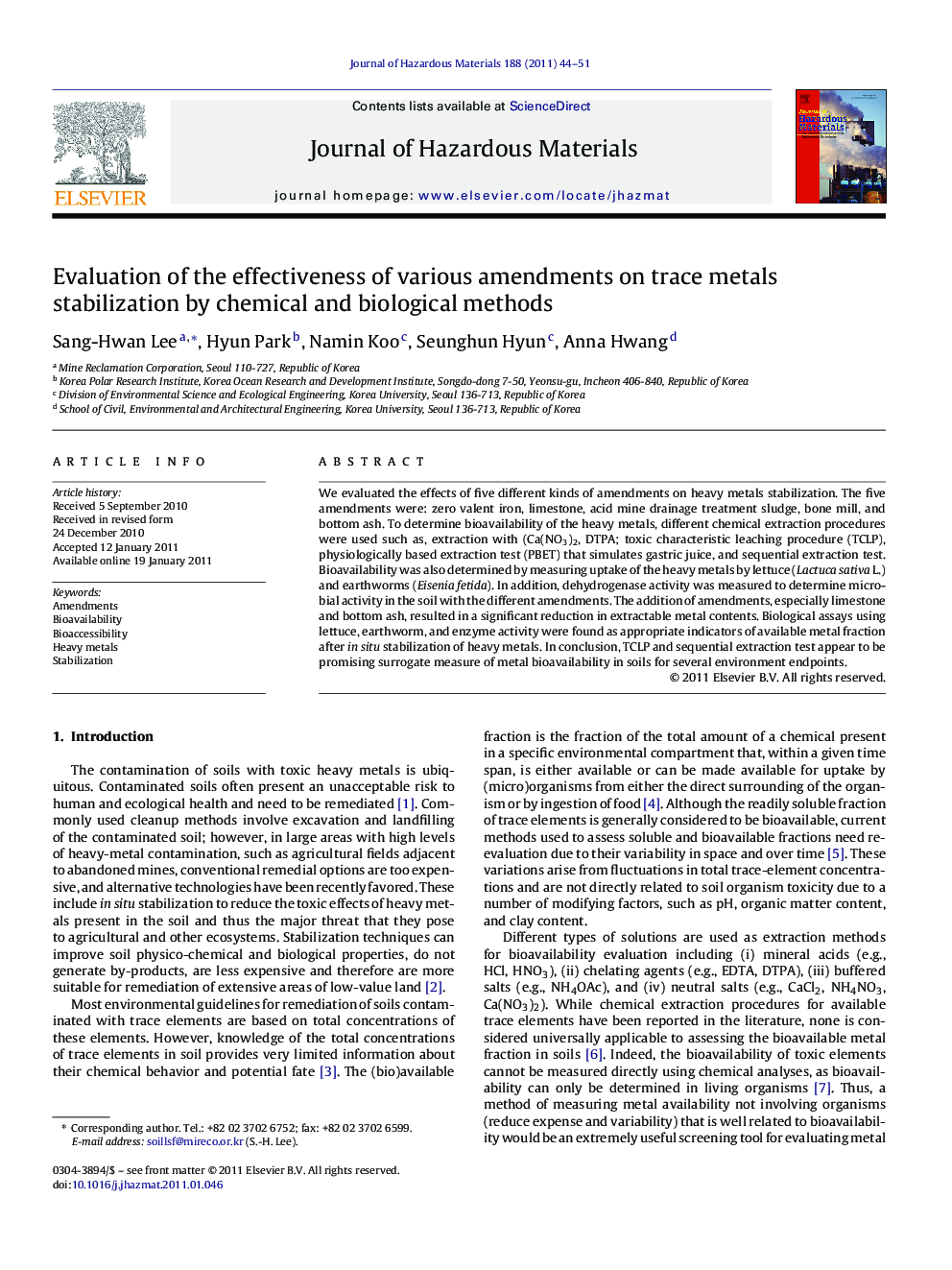| Article ID | Journal | Published Year | Pages | File Type |
|---|---|---|---|---|
| 579598 | Journal of Hazardous Materials | 2011 | 8 Pages |
Abstract
We evaluated the effects of five different kinds of amendments on heavy metals stabilization. The five amendments were: zero valent iron, limestone, acid mine drainage treatment sludge, bone mill, and bottom ash. To determine bioavailability of the heavy metals, different chemical extraction procedures were used such as, extraction with (Ca(NO3)2, DTPA; toxic characteristic leaching procedure (TCLP), physiologically based extraction test (PBET) that simulates gastric juice, and sequential extraction test. Bioavailability was also determined by measuring uptake of the heavy metals by lettuce (Lactuca sativa L.) and earthworms (Eisenia fetida). In addition, dehydrogenase activity was measured to determine microbial activity in the soil with the different amendments. The addition of amendments, especially limestone and bottom ash, resulted in a significant reduction in extractable metal contents. Biological assays using lettuce, earthworm, and enzyme activity were found as appropriate indicators of available metal fraction after in situ stabilization of heavy metals. In conclusion, TCLP and sequential extraction test appear to be promising surrogate measure of metal bioavailability in soils for several environment endpoints.
Related Topics
Physical Sciences and Engineering
Chemical Engineering
Chemical Health and Safety
Authors
Sang-Hwan Lee, Hyun Park, Namin Koo, Seunghun Hyun, Anna Hwang,
